
Labeling is one of those behind-the-scenes tasks that can quietly make or break efficiency. While hand labeling may feel like the simplest and cheapest option, it can create more problems than it solves. Production slows, mistakes slip through, and scaling operations becomes difficult.
On the other hand, you may feel like packaging automation is out of reach. Investing in labeling equipment seems like a big leap, and concerns about cost, complexity, or ending up with the wrong system can cause businesses to hesitate. But automation isn’t an all-or-nothing decision. With practical packaging solutions, manufacturers get a complete setup that works out of the box, along with the flexibility to adjust or expand as needs change. This adaptability makes automation practical and affordable for every business’s size or stage.
Let’s explore why hand labeling is more costly than it appears, how modular automation works, and why it’s a smart, future-focused investment for growing manufacturers.
Manual Labeling Costs More Than You Think
At first glance, hand labeling looks like a money saver. You only need labels, containers, and staff. It feels simple, flexible, and inexpensive compared to buying packaging equipment. But once production ramps up, the hidden costs quickly surface. What seems efficient at a small scale often becomes unsustainable when demand grows.
Here are some of the biggest challenges businesses face with hand labeling:
- Labor-intensive Work: Labeling each product by hand requires significant time and staff resources. For growing manufacturers, this adds up quickly in wages.
- Higher Risk of Errors: Human error is unavoidable. Crooked, misapplied, or missing labels can lead to waste and rework. In regulated industries, mistakes can even trigger compliance issues.
- Inconsistent Presentation: Labels applied by hand usually vary in placement and appearance. This can diminish shelf appeal and brand credibility.
- Limited Scalability: Hand labeling creates a bottleneck. As demand increases, production slows, making it harder to meet deadlines or grow into new markets.
When you add up the labor hours, wasted materials, and lost opportunities, the “cheap” option becomes much more expensive. Over time, these costs may exceed the price of an automated system. But more importantly, they limit a company’s ability to scale efficiently and compete with brands that already use packaging automation.
What Holds Manufacturers Back from Automation
If hand labeling is so costly, why do so many businesses stick with it? For many, it’s not about the actual numbers; it’s about perception. It’s easy for small and mid-sized manufacturers to look at automation as a “nice to have” reserved for large companies with high-volume production lines. This mindset can keep you in a cycle of manual labor even when packaging automation could save money.
The hesitation usually comes down to a few common concerns:
- High Upfront Cost: Automation feels like a big-ticket purchase, especially compared to labor costs spread out over weeks or months.
- Fear of Over-Investing: Companies worry about buying a system that’s “too big” or doesn’t fit their current operation.
- The Myth of Size: Automation is often associated with massive production lines and large corporations, leaving smaller manufacturers thinking it’s not for them.
These concerns are understandable, but they shouldn’t be the determining factor. Practical packaging solutions, especially automated modular systems, are designed with flexibility in mind. With the right approach, automation can be tailored to fit any production size and budget, removing the risk of overbuying while ensuring scalability for the future.
Modular Labeling Equipment Built for Growth
Modular labeling systems aren’t about buying a bare-bones system and piecing together components later. The real value lies in their flexibility. Because the components are designed to connect, attach, and fit seamlessly with a variety of setups, the system can adapt to the unique needs of your production line.

Built for Flexibility
If your product line evolves, your packaging equipment can evolve with it. Need an additional label head to accommodate new container styles? Looking for a different angle or adjustment to achieve more precise placement? Modular design allows for these kinds of changes without requiring an entirely new system. The equipment is engineered to be customized, reconfigured, and expanded so it continues to meet your exact requirements.
Standard Configurations That Work
For most manufacturers, our standard configurations already provide everything needed to label efficiently and consistently. These practical packaging solutions are built to handle the majority of applications right out of the box. But if you do have unique requirements, you won’t be stuck. Modular systems are designed to be adjusted or added onto, ensuring that your labeling process always fits your business.
This balance of ready-to-use functionality and built-in adaptability makes modular labeling systems a practical choice. They provide confidence that you’re investing in packaging equipment that works today and won’t hold you back tomorrow.
How Labeling Automation Pays for Itself
ROI is the strongest reason to switch to automation. What feels like a significant upfront investment quickly proves to be one of the smartest financial decisions a manufacturer can make.

Here’s where the benefits of automation really show up:
- Reduced Labor Costs: One system can handle the work of multiple employees, freeing staff for higher-value tasks.
- Improved Accuracy: Automation ensures consistent label placement, eliminating waste from misapplied or damaged labels.
- Faster Production: Automated systems apply labels far more quickly than manual labor, allowing manufacturers to scale without increasing headcount.
- Higher Profitability: Increased speed, reduced errors, and consistent presentation all translate to stronger margins and brand credibility.
Instead of thinking of automation as an expense, it should be viewed as a growth driver. Many businesses find the savings in labor and waste alone offset the upfront cost in a matter of months, leaving years of efficiency and profitability gains ahead.
Simple Steps to Transition from Hand Labeling to Automation
Transitioning from hand labeling to automation doesn’t have to be overwhelming. A strategic approach can help you move forward with confidence and see results right away. By breaking the process into smaller, manageable steps, packaging automation feels less like a leap and more like a strategic plan.
Here’s where to start:
- Evaluate Your Current Process: Identify where labeling slows you down, whether it’s labor costs, errors, or production bottlenecks.
- Choose Your First Step: Look for the smallest automation upgrade that delivers the biggest impact, such as adding a wrap-around labeler for bottles or a filling and capping system.
- Partner With the Right Provider: Work with a company like Pack Leader USA that offers practical packaging solutions and ongoing support. This ensures your investment grows with you rather than holding you back.
Even small changes can have an immediate effect on efficiency and costs. By starting with one modular solution, you’ll build a foundation that can scale as your business grows or changes, proving that packaging automation doesn’t have to be a massive, one-time investment.
Turn Labeling Into a Growth Strategy
Automation doesn’t have to be an all-or-nothing investment. While hand labeling may feel cheaper, it drains time, money, and scalability over the long term. Modular labeling systems are a practical alternative. They’re flexible enough to fit current needs, yet powerful enough to grow with your business.
Think of automation as a growth strategy. By investing in modular solutions, you’ll reduce labor costs, improve quality, and boost efficiency while keeping your budget in check.
Ready to see how automation could work for your packaging line? Download our free “Practical Guide to Choosing Labeling Equipment” to explore modular solutions and discover how to make labeling automation affordable for your business.
.webp?width=200&height=114&name=2x-Packleader-logo-large%20(1).webp)

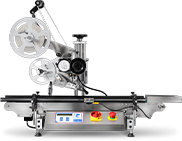
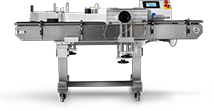

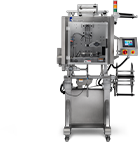
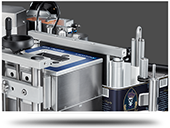

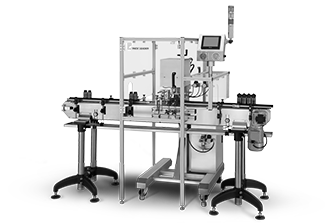







.webp?width=360&name=2x-color-logo%20(1).webp)